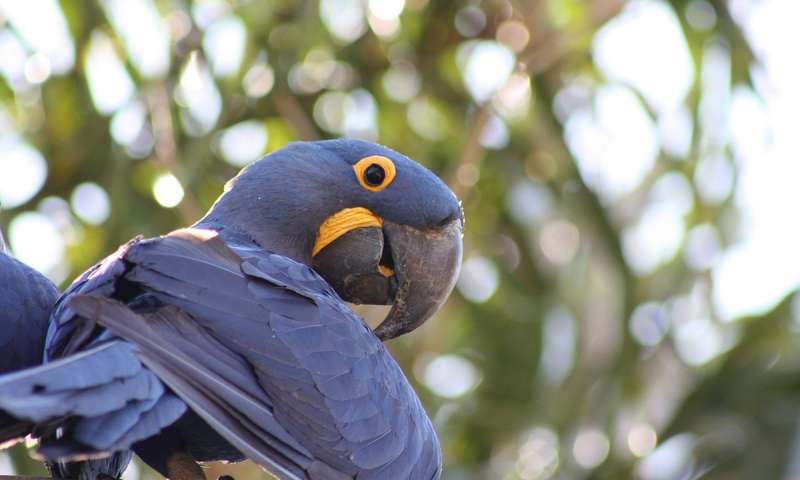
Not-so-bird brain: Neuroscientists discover the mechanism responsible for cognition in intelligent birds, like this parrot. Credit: Andrew Iwaniuk
University of Alberta neuroscientists have identified the neural circuit that may underlay intelligence in birds, according to a new study. The discovery is an example of convergent evolution between the brains of birds and primates, with the potential to provide insight into the neural basis of human intelligence.
“An area of the brain that plays a major role in primate intelligence is called the pontine nuclei,” explained Cristian Gutierrez-Ibanez, postdoctoral fellow in the Department of Psychology. “This structure transfers information between the two largest areas of the brain, the cortex and cerebellum, which allows for higher-order processing and more sophisticated behaviour. In humans and primates, the pontine nuclei are large compared to other mammals. This makes sense given our cognitive abilities.”
Birds have very small pontine nuclei. Instead, they have a similar structure called the medial spiriform nucleus (SpM) that has similar connectivity. Located in a different part of the brain, the SpM does the same thing as the pontine nuclei, circulating information between the cortex and the cerebellum. “This loop between the cortex and the cerebellum is important for the planning and execution of sophisticated behaviours,” said Doug Wylie, professor of psychology and co-author on the new study.
Not-so-bird brain
Using samples from 98 birds from the largest collection of bird brains in the world, including everything from chickens and waterfowl to parrots and owls, the scientists studied the brains of birds, comparing the relative size of the SpM to the rest of the brain. They determined that parrots have a SpM that is much larger than that of other birds.
“The SpM is very large in parrots. It’s actually two to five times larger in parrots than in other birds, like chickens,” said Gutierrez. “Independently, parrots have evolved an enlarged area that connects the cortex and the cerebellum, similar to primates. This is another fascinating example of convergence between parrots and primates. It starts with sophisticated behaviours, like tool use and self-awareness, and can also be seen in the brain. The more we look at the brains, the more similarities we see.”
Next, the research team hopes to study the SpM in parrots more closely, to understand what types of information go there and why.
“This could present an excellent way to study how the similar, pontine-based, process occurs in humans,” added Gutierrez. “It might give us a way to better understand how our human brains work.”
This research was conducted in collaboration with researchers from the University of Lethbridge. The paper, “Parrots have evolved a primate-like telencephalic-midbrain-cerebellar circuit,” was published in Scientific Reports.




